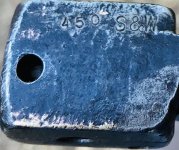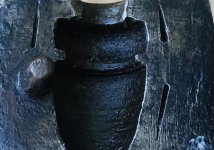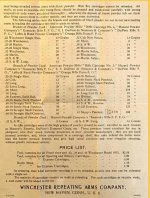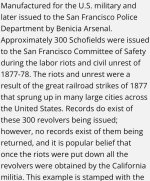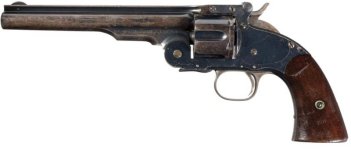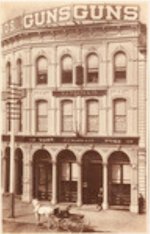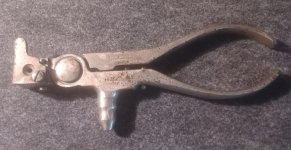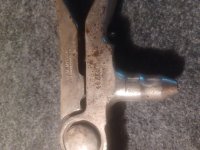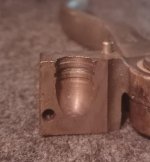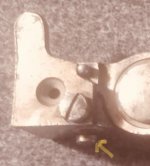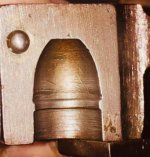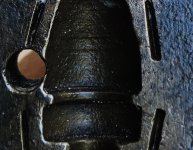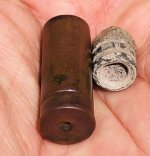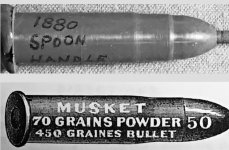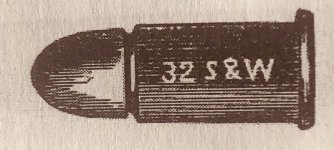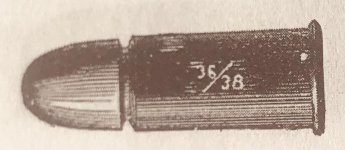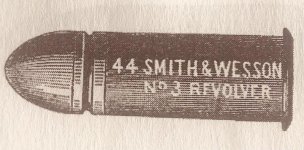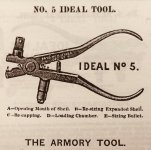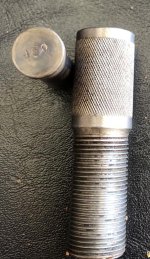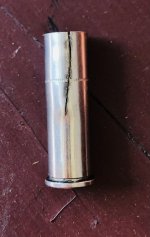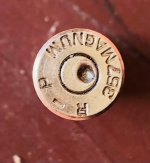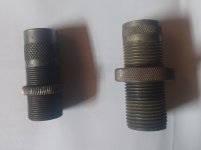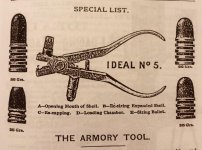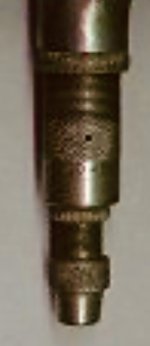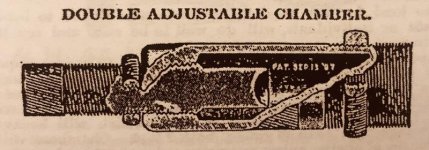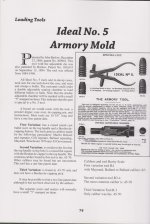I have a few old antique dealers notify me when they find old bullet molds in the Bay Area.
One of the common molds rarely actually still found in this area was manufactured by C.D. Ladd of San Francisco. 1870’s to 1890’s.
Just picked this one up. It’s an early mold circa early 1880’s. Ladd’s molds were originally painted gold and you can see traces. First one I’ve seen for the 45 Schofield.
I also found that Winchester actually made a reloading tool for the Schofield in 1882 from one of C. D. Ladd’s original Distributor catalogs from 1884. This is the first listing that I’ve documented that actually lists the 45 S&W (Schofield revolver) on their tool list.
It was not a special order. It’s on the standard list of tools and calibers available at C. D. Ladd’s store in 1884. It would look like the 44 RUSSIAN tool I posted but would be stamped 45 S&W….at least that’s what I think it would look like. I’ve never seen one except for the Government Winchester tool I have but it’s marked totally different.
Just thought I’d share the update for the antique tool collectors. 45 Schofield stuff is nothing but rare.
So this info proves that the 45 Schofield reloading tool was not a special order tool and it was available on the commercial market made by various manufacturers that included C.D. Ladd and Winchester. I have also seen partial tool kits made by UMC.
Notice also that the bullet size is stamped on one side of the mold block. 450. Not 452 or 454 but 450. I did mic the cavity and it is 450.
Murph
One of the common molds rarely actually still found in this area was manufactured by C.D. Ladd of San Francisco. 1870’s to 1890’s.
Just picked this one up. It’s an early mold circa early 1880’s. Ladd’s molds were originally painted gold and you can see traces. First one I’ve seen for the 45 Schofield.
I also found that Winchester actually made a reloading tool for the Schofield in 1882 from one of C. D. Ladd’s original Distributor catalogs from 1884. This is the first listing that I’ve documented that actually lists the 45 S&W (Schofield revolver) on their tool list.
It was not a special order. It’s on the standard list of tools and calibers available at C. D. Ladd’s store in 1884. It would look like the 44 RUSSIAN tool I posted but would be stamped 45 S&W….at least that’s what I think it would look like. I’ve never seen one except for the Government Winchester tool I have but it’s marked totally different.
Just thought I’d share the update for the antique tool collectors. 45 Schofield stuff is nothing but rare.
So this info proves that the 45 Schofield reloading tool was not a special order tool and it was available on the commercial market made by various manufacturers that included C.D. Ladd and Winchester. I have also seen partial tool kits made by UMC.
Notice also that the bullet size is stamped on one side of the mold block. 450. Not 452 or 454 but 450. I did mic the cavity and it is 450.
Murph
Attachments
Last edited:

